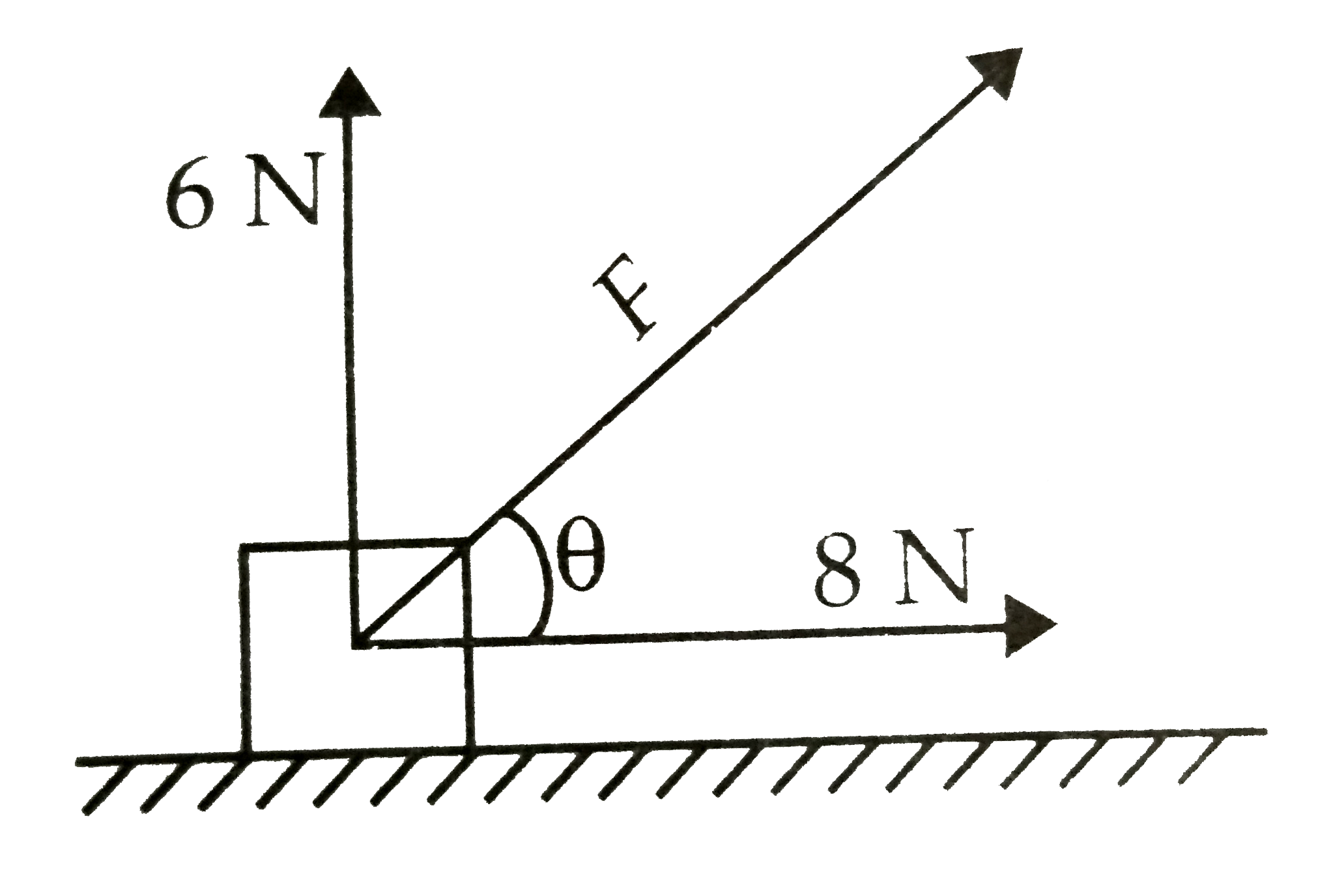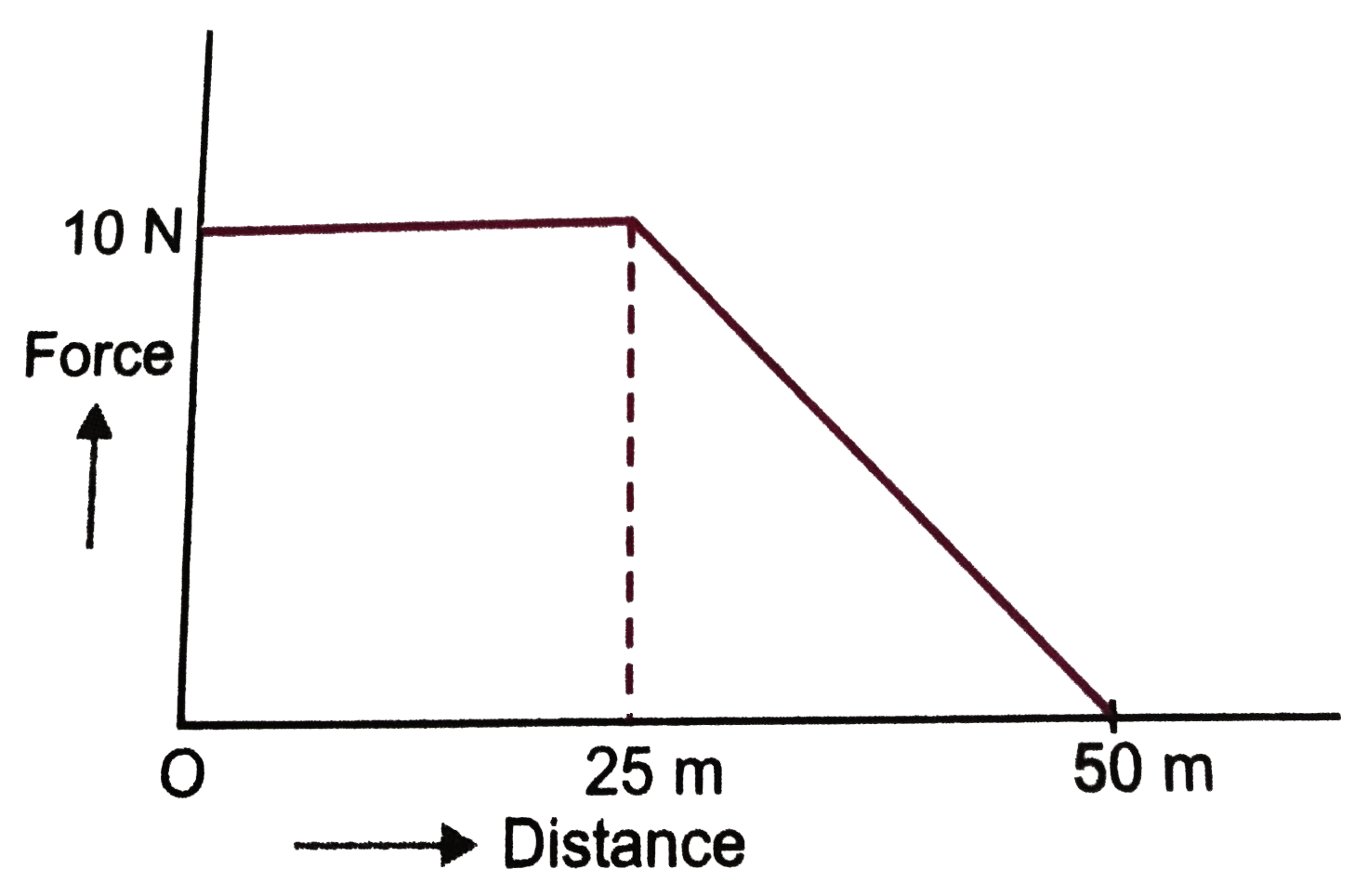A body of mass 10kg is acted upon by two per pendicular forces 6N and 8N. The resultant ac-celeration of the body is .
1ms−2 at angle of tan−1(34)w.r.t.8Nforce
0.2ms−2 at angle of tan−1(34)w.r.t.8Nforce
1ms−2 at angle of tan−1(43)w.r.t.8Nforce
0.2ms−2 at angle of tan−1(43)w.r.t.8Nforce
The correct Answer is:A
Here, m=10kg
The resultant force acting on the body is
Let the resultant force F makes an angle θ w.r.t. 8N force,
From figure, tanθ=68NN=34
The resultant acceleration of the body is, a=Fm=1010Nkg=1ms−2
The resultant acceleration, is along the direction of the resultant force. Hence, the resultant acceleration of the body is 1ms−2 at an angle tan−1(34) w.r.t. 8N force.

Topper's Solved these Questions
- LAWS OF MOTIONBOOK - NCERT FINGERTIPSCHAPTER - LAWS OF MOTIONEXERCISE - Common Forces In Mechanics
19 Videos
- LAWS OF MOTIONBOOK - NCERT FINGERTIPSCHAPTER - LAWS OF MOTIONEXERCISE - Circular Motion
14 Videos
- LAWS OF MOTIONBOOK - NCERT FINGERTIPSCHAPTER - LAWS OF MOTIONEXERCISE - Conservation Of Momentum
4 Videos
- KINETIC THEORYBOOK - NCERT FINGERTIPSCHAPTER - KINETIC THEORYEXERCISE - Assertion And Reason
10 Videos
- MECHANICAL PROPERTIES OF FLUIDSBOOK - NCERT FINGERTIPSCHAPTER - MECHANICAL PROPERTIES OF FLUIDSEXERCISE - Assertion And Reason
15 Videos
Similar Questions
Knowledge Check
A body of mass 10 kg is acted upon by two perpendicular forces , 6 N and 8 N . The resultant acceleration of the body is
A1ms−2 at an angle of tan−1(34) w.r.t. 6 N forceB0.2ms−2 at an angle of tan−1(43) w.r.t. 6 N forceC1ms−2 at an angle of tan−1(34) w.r.t. 8 N forceD0.2 ms−2 at an angle of tan−1(34) w.r.t. 8 N forceA body of mass 10kg is acted upon by two perpendicular force, 6N . The resultant acceleration of the body is.
A1ms−2 at an angle of tan−1(34) w.r.t. 8N forceB0.2ms−2 at an angle of tan−1(34) w.r.t. 8N forceC1ms−2 at an angle of tan−1(43) w.r.t. 8N forceD0.2ms−2 at an angle of tan−1(43) w.r.t. 8N forceA body of mass 5kg is acted upon by two perpendicular force 8N and 6N, find the magnitude and direction the acceleration
A3ms−2,θ=cos−1(0.8) from 8mB2ms−2,θ=cos−1(0.6) from 6mC3ms−2,θ=cos−1(0.9) from 6mD5ms−2,θ=cos−1(0.81) from 8m
A body whose mass 6 kg is acted upon by two forces
(8ˆi+10ˆj) N and (4ˆi+8ˆj)N. The accelerartion produced will be ("in" m//s^(2))-
View SolutionA body of mass 5kg is acted upon by a variable force. The force varies with the distance covered by the body as shown in figure. What is the speed of the body when it has covered 25m? Assume that the body starts from rest.

View SolutionA body is under the action of two mutually perpendicular forces of 3 N and 4 N. The resultant force acting on the body is
View SolutionA body of mass 10 kg is acted upon by two forces each of magnitude 10 N making an angle of 60∘ with each other. Find the net acceleration of the body
View SolutionA body of mass 3 kg at rest is acted upon by a force and the body moves through a distance 20 m in 5 s. Force on the body is
View Solution
